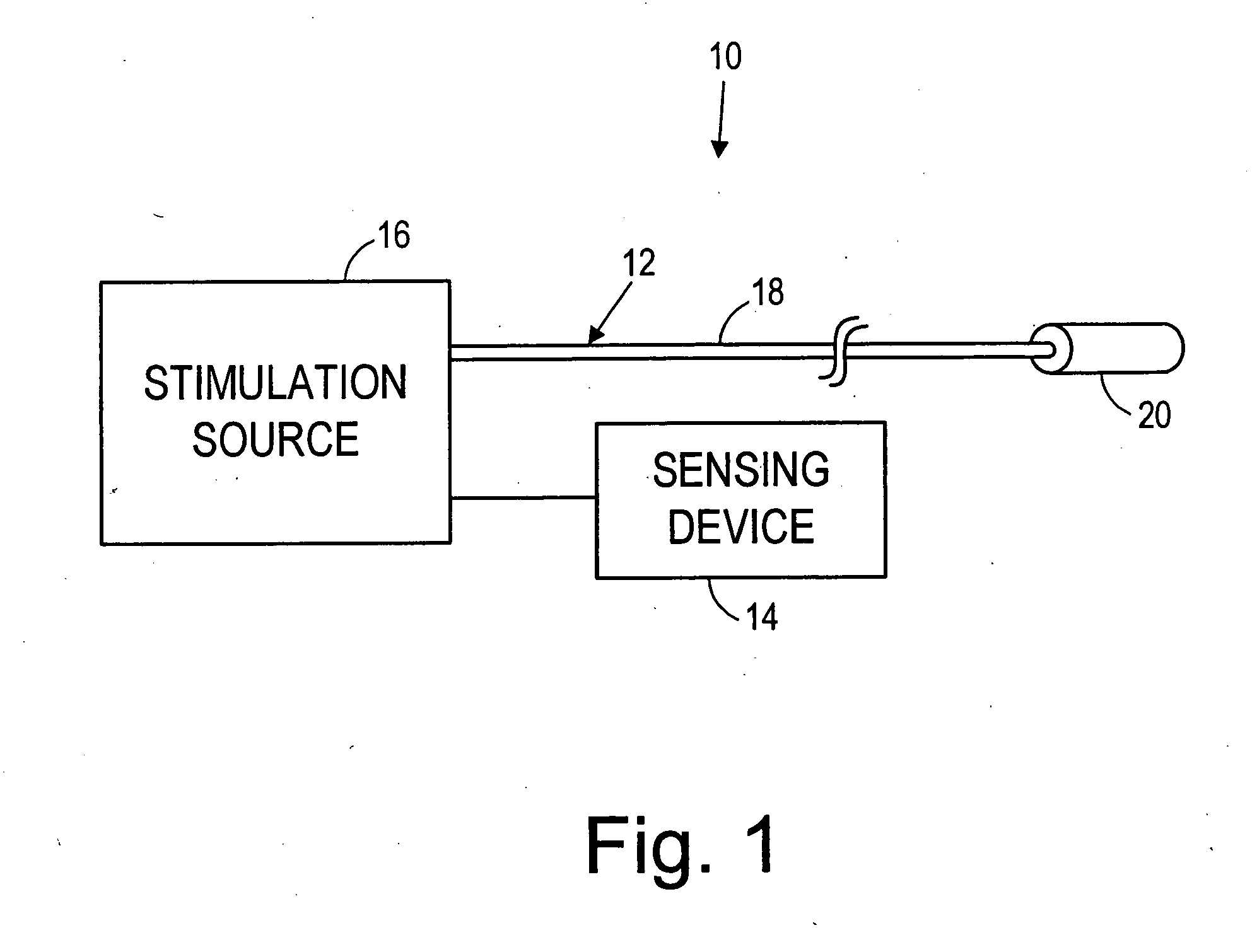Method for stimulating neural tissue in response to a sensed physiological event
a physiological event and neural tissue technology, applied in the field of physiological disorders treatment and diagnosis, can solve the problems of additional risks, burr hole complicating the procedure, and the technique is still quite invasiv
- Summary
- Abstract
- Description
- Claims
- Application Information
AI Technical Summary
Benefits of technology
Problems solved by technology
Method used
Image
Examples
Embodiment Construction
[0013] Referring now to FIG. 1, an intravascular brain stimulation system 10 constructed in accordance with one preferred embodiment of the present invention is shown. Depending on its specific arrangement within a patient's body, the stimulation system 10 is configured for treating a specific disorder from which the patient suffers by stimulating a specific region of the patient's brain in response to a sensed physiological event associated with the specific disorder. For example, the system 10 can be designed treat neurodegenerative disorders, such as Parkinson's disease, Huntington's disease, Alzheimer's disease, or other chronic neurological disorders, such as epilepsy, essential tremor, depression, obsessive compulsive disorder, schizophrenia, and neuropathic pain. In these cases, the sensed physiological event used to trigger stimulation of the patient's brain can be, e.g., a change in electrical activity in the patient's cerebral or nerve tissue, which may indicate the onset ...
PUM
 Login to View More
Login to View More Abstract
Description
Claims
Application Information
 Login to View More
Login to View More - R&D
- Intellectual Property
- Life Sciences
- Materials
- Tech Scout
- Unparalleled Data Quality
- Higher Quality Content
- 60% Fewer Hallucinations
Browse by: Latest US Patents, China's latest patents, Technical Efficacy Thesaurus, Application Domain, Technology Topic, Popular Technical Reports.
© 2025 PatSnap. All rights reserved.Legal|Privacy policy|Modern Slavery Act Transparency Statement|Sitemap|About US| Contact US: help@patsnap.com


